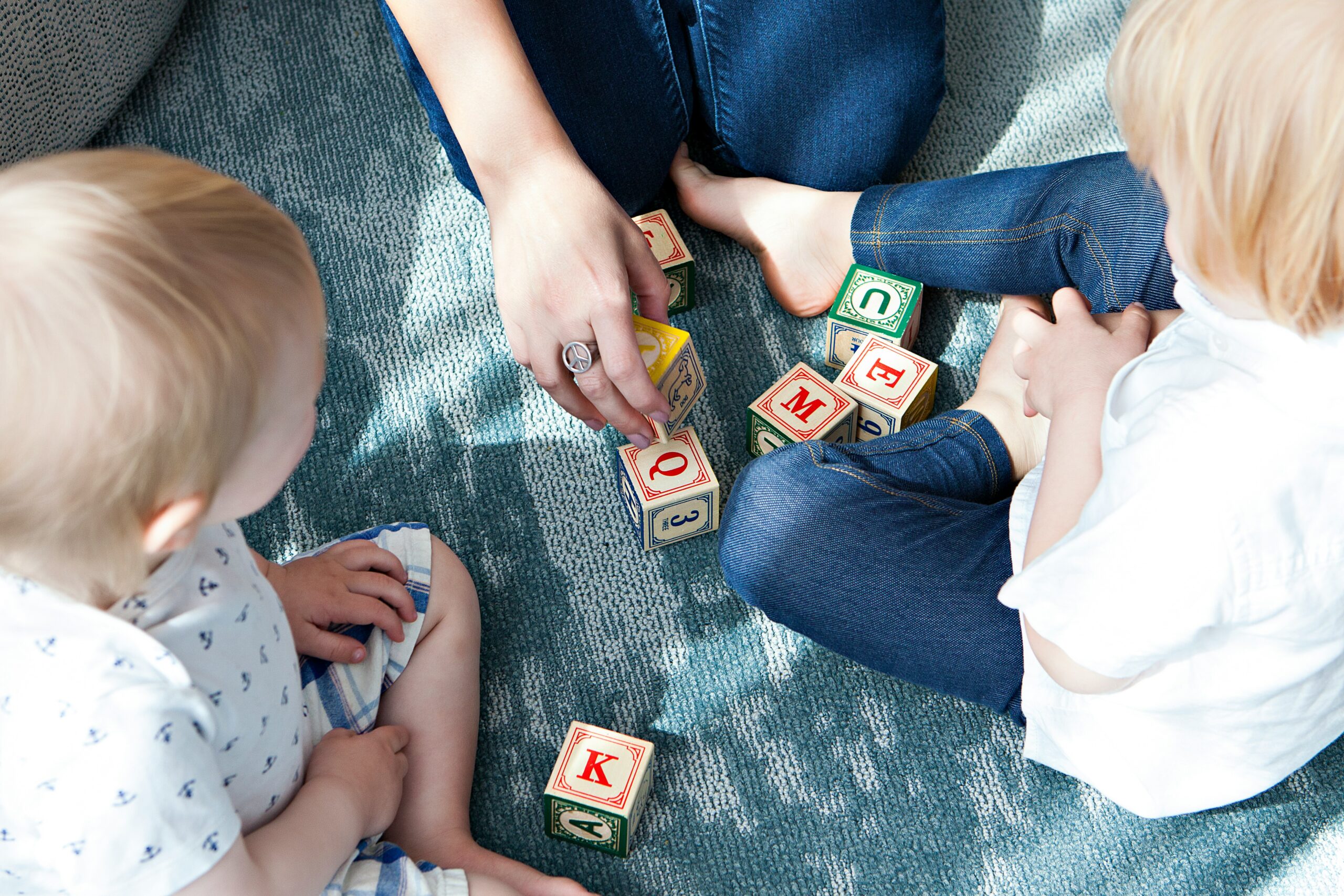Some children flinch at the brush of a jumper tag, melt down when the toothpaste tastes “too spicy,” or lose it completely when you offer them the “wrong” coloured cup. Others speak endlessly, ask impossible questions at bedtime, or struggle to get dressed even when they’re desperate to go out. If this sounds familiar (this has been some of my experiences as a mum!), you’re not alone, and neither is your child.
Neurodivergence is becoming a more common part of the parenting conversation, but many mums, dads, and carers are still left wondering: Am I doing something wrong? Why isn’t the usual parenting advice working?
This is not you, but you need to know that you are parenting a nervous system that needs something different.
Neurodivergence refers to differences in how a person’s brain processes information, emotions, and sensory input. The difference being measured by how it varies from the dominant population. It includes a range of profiles such as:
· Autism: A neurodevelopmental difference that affects how a person experiences social interaction, communication, and sensory input, often with a preference for routine or focused interests.
· Attention Deficit Hyperactivity Disorder (ADHD): A condition that affects attention, impulse control, and energy regulation, making it harder to focus, sit still, or manage time and tasks.
· Dyslexia: A learning difference that primarily affects reading, spelling, and processing written language, even with normal or high intelligence.
· Dysgraphia: A condition that affects handwriting and written expression, making it difficult to form letters, organise thoughts on paper, or write fluently.
· Dyscalculia: A learning difference that impacts understanding of numbers, time, sequencing, and mathematical reasoning.
· Dyspraxia: A condition that affects motor coordination and planning, making tasks like handwriting, balance, or dressing more difficult.
· Tourette’s Syndrome: A neurological condition characterised by involuntary sounds or movements called tics, which can be simple or complex.
· Sensory Processing Disorder: A condition where the brain struggles to process sensory information properly, leading to over- or under-sensitivity to things like sound, touch, or movement.
Some children have a diagnosis; many don’t (yet). But the key message is when different behaviours are seen in this group of children, they are not ‘misbehaving,’ they’re often communicating distress, confusion, or overwhelm in the only way their system knows how.
Imagine trying to concentrate in a room that’s too bright, too loud, and too full of unspoken social rules. Now imagine being told to “calm down” or “sit still” while your body feels like it’s on fire. That’s what it can be like for neurodivergent children, trying to live in a world that does things differently every day.
The Misunderstood Behaviours
It’s common for parents to receive feedback like:
- “He’s very controlling.”
- “She doesn’t listen.”
- “They need firmer discipline.”
But the truth is, most challenging behaviour is a stress response and not a power struggle. When a child’s (or an adult’s) nervous system is dysregulated (too overwhelmed to think clearly), their brain literally can’t access logic, memory, or reasoning. It like a car when the accelerator is pushed and pushed to start it – the engine gets flooded. They don’t need stricter rules. They need safety.
Let’s reframe a few common behaviours:
| What You See | What It Might Really Be |
| Meltdowns over small things | Sensory overload or transition anxiety. Not boundary pushing. |
| “Bossy” or rigid play | Need for predictability in an unpredictable world. Not wanting their own way. |
| Resistance to trying new foods | Texture or smell sensitivity. Not defiance |
| Non-stop talking or fidgeting | Self-regulation attempts. Not rudeness. |
| Avoiding eye contact | Eye contact uses a lot of processing bandwidth and it triggers the fear centre of the brain already overactive for those with neurodiversity. Not disrespect. |
When we start to see that behaviours are about processing differences, we can begin to respond differently from the ways we have been taught to parent.
Why Traditional “Time Out” Often Backfires
Many parents are advised to use ‘Time Out’ as a calm, structured way to discipline their child. The logic is usually: if the child misbehaves, remove them from the environment, allow them to “reflect,” and then return once they’re calm. But for neurodivergent children, this well-meaning strategy often creates more harm than harmony, because it misunderstands what’s really happening in their nervous system.
Here’s why.
When your child is overwhelmed, they’re not being naughty. They’re in fight, flight, or freeze. Their rational brain (the prefrontal cortex) has shut down, and their survival system has taken over.
If you send them away to “think about what they’ve done,” they can’t. Because biologically, they can’t access logic or self-awareness while dysregulated. A child being isolated in this moment may send the message:
“When you’re overwhelmed, I’ll leave you.”
“Big feelings aren’t safe here.”
“You’re only lovable when you’re calm.”
For children who already experience the world intensely, this kind of rupture in connection is deeply shaming.
The Problem Isn’t the Break – It’s the Disconnection
To be clear: taking space can be helpful for everyone, including parents. But punitive isolation during emotional overload doesn’t teach regulation, it teaches fear of getting it wrong.
‘Time Out’ assumes that behaviour is intentional and cognitive. But if we instead view behaviour as communication, we start to ask different questions:
- What was my child trying to express?
- Was this a moment of overwhelm, not opposition?
- What support do they need to feel safe again?
Time In: The Attachment-Based Alternative
Rather than removing the child from the relationship when they’re distressed, we can stay connected while setting boundaries.
This is called a ‘Time In’. And it’s far more effective for neurodivergent nervous systems.
What it looks like:
- Sit or crouch beside your child in a calm posture.
- Offer sensory supports: a soft toy, a blanket, a chew, or even just your steady breath.
- Use few words, or none at all. You might say, “I’m here. We’ll get through this together.”
Can I still have boundaries?
Connection doesn’t have to mean chaos.
You can still say:
- “I won’t let you hurt me.”
- “It’s okay to be angry, but not okay to throw that.”
- “Let’s take a break together until your body feels safer.”
But your tone, presence, and emotional availability make all the difference. You’re not withdrawing love when they’re struggling. You’re offering it as the medicine they most need.
Over time, your child learns:
- “When I feel big things, I’m not sent away, I’m soothed.”
- “My body isn’t bad, it’s asking for help.”
- “I can learn to calm down because someone models it for me.”
That is how emotional regulation develops from the outside in, through relationship first. Our nervous systems, co-regulate each other.
What If I Need a Time Out?
Sometimes you are the one dysregulated. Your own nervous system may be overwhelmed, especially if you weren’t parented this way yourself.
In those moments, you might say:
- “I’m starting to feel too stressed to help right now. I’m going to take five deep breaths and then come back.”
- “I love you. I just need to calm my body too.”
This models self-regulation and emotional literacy, which your child will one day mirror.
Everyday Tools That Make a Big Difference
1. Visual Schedules
Neurodivergent children often feel safer when they know what’s coming. Use visual aids like picture boards, laminated checklists, or whiteboards with magnets to map out routines (morning routine, bedtime, school transitions).
How to do it: Take photos of your child doing each step, print and display them in sequence. For example: wake up → toilet → breakfast → get dressed. Refer to the board throughout the day to reduce verbal overload.
2. Sensory-Friendly Environments
Create a calming space in your home where your child can decompress. It doesn’t have to be fancy, just consistent and safe.
How to do it: Set up a corner with a beanbag, soft lighting, fidget tools, noise-cancelling headphones, and weighted blankets. Let your child choose a few comfort items to keep there, and encourage its use when things feel “too much.”
3. Play as Processing
Imaginative or role play helps children process social situations and emotions, especially when verbal communication is tricky.
How to do it: Use toys to act out scenarios like “going to school” or “a friend taking a toy.” Ask open questions like, “What do you think Teddy would feel right now?” or “What might help him feel better?” Let your child guide the story without correcting them.

4. Regulate Together
Young children can’t self-soothe without first experiencing co-regulation. Your calm helps shape theirs.
How to do it: Try mirroring their breath, inviting them to press their hands against yours for grounding, or offering a rhythmic activity (rocking, walking, jumping on a mini-trampoline). Label your own emotions calmly: “I feel a bit wobbly too, let’s calm down together.”
5. Focus on Connection, Not Correction
Prioritising relationship over discipline creates long-term safety and trust.
How to do it: Validate the emotion even as you guide behaviour: “You’re really frustrated and wanted that toy first. It’s okay to feel that way. Let’s figure out what to do next.” Use storytelling or drawing later to revisit situations with curiosity, not blame.
Parenting a neurodivergent child means parenting the nervous system, not just the behaviour. It means listening to what isn’t said. It means doing things differently. It also means becoming fluent in a new language: safety, regulation, and unconditional acceptance.
Your child doesn’t need fixing. They need your faith in who they already are.
And you? You’re doing more than raising a child. You’re raising the next generation of self-aware, emotionally literate, beautifully wired humans.
That’s something to be proud of.
About the author
Dr Tracy King is a Chartered Clinical Psychologist who specialises in neurodiversity, trauma, and family dynamics. She brings both professional insight and lived experience to her work. Not only does she support families navigating ADHD, Autism, and learning differences, but she also lives that journey herself as a mother of three neurodivergent daughters with Autism, ADHD, and Dyslexia. One is home-educated, and all have taught her as much about the nervous system as any textbook ever could.
In addition to her therapeutic practice, Dr Tracy works as an expert witness in the family courts, assessing children’s needs, parenting capacity, and relational dynamics in complex family systems. She is passionate about reshaping how we understand behaviour, replacing shame-based models with nervous system-informed, compassionate approaches that honour difference rather than pathologise it. Website: www.drtracyking.co.uk
